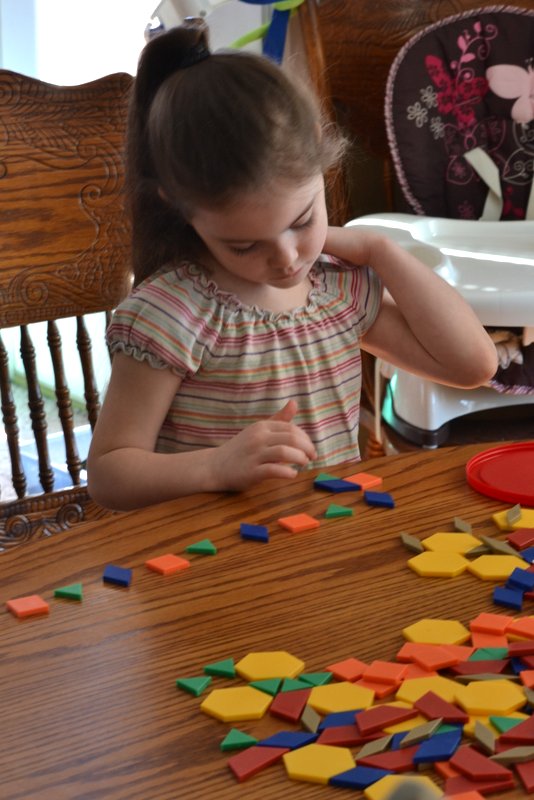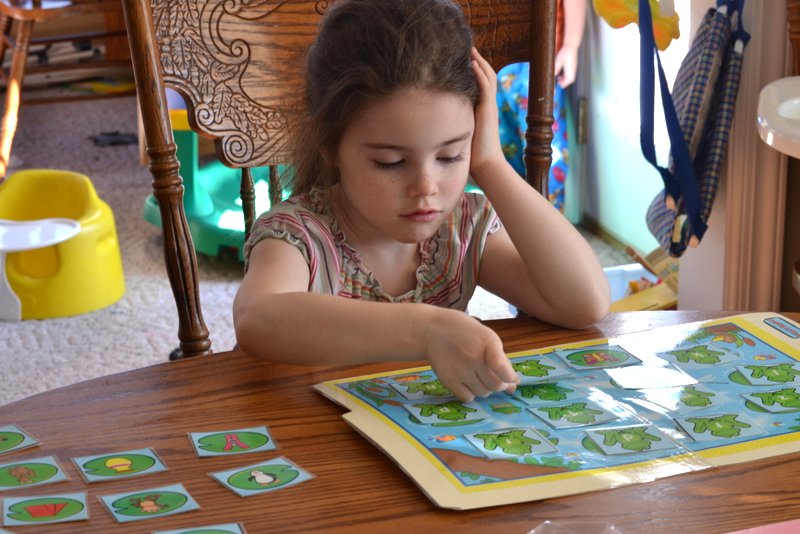My picture of childhood is dirt under little fingernails, wind tasseled hair, sun-kissed cheeks, and bare feet. Instead today our society takes children as young as 2 at times, but for sure by 5, expects them to walk in a line, be quiet, ride a bus by themselves, and sit in a desk for hours each day. And then we wonder why so many children are being labeled “hyper-active”. Maybe it is not the children that have a problem. Maybe it is our expectations. Those thoughts led me on a journey for a new method of learning. And I found it through homeschooling without textbooks.
I have fallen in love with homeschooling without textbooks. We do it as much as we can for as many subjects as possible. Now that Katherine is approaching the age/maturity for Kindergarten I am getting to take this approach to a whole new level. It has been so much fun to find new ways to engage her and to expand her knowledge and love of learning. Since Christmas I have been much more focused on her schooling because she is so interested in it. She really isn’t considered “school age” until next fall but that is what makes homeschooling such a wonderful opportunity. It can meet the needs of children where they are and what they are ready for at any age, no restrictions.

Today in part one of this series I will be talking about math. For Kindergarten my main focuses in the math subject are numbers, money, adding, subtracting, patterns, and shapes. Homeschooling without books is really just about seeing life as a platform for learning and then leading your children to explore in new ways.
One of my favorite manipulatives that I purchased for this age are these pattern blocks that can be found on Amazon. We use these for sorting colors and shapes and for making patterns. They are also great fine motor skills options as stacking blocks. When I introduce addition and subtraction they make great counting pieces to teach this skill.

Number flashcards, much like these, are something that we use often during the first few years of schooling. We use them for number recognition over and over again. I will sometimes lay out random numbers and have the child place that number of beans, blocks, cheerios, etc on the card so that I can “test” or I prefer to call it measure their mastery. These cards are also a great way to practice number order. They make great hands on math learning fun!!

Playdough is so much more than just a ball of moldable fun. It can teach shapes when you use cookie cutters, colors as you explore the box, and tons and tons of fine motor skills practice. Children learn so much through play and it is so important that as parents we see toys as not just “fun” for our children. They need to be viewed as learning tools.

One of the best ways to start homeschooling without textbooks for Kindergarten math and, most every grade really, is to see life as school. Count steps as you go up or down. Say the color of each car as you walk through the parking lot, talk about opposites at the park (over the bridge, under the slide, next to the tree, inside the swing) and practice counting money when you get change at the store. You can teach so many concepts without even opening a textbook. We teach math in school because we need math to function in our everyday life. So use that to your advantage and teach math as you go through everyday life. Once you start looking for ways you will be amazed at how fast children master new concepts.


Comments are closed.